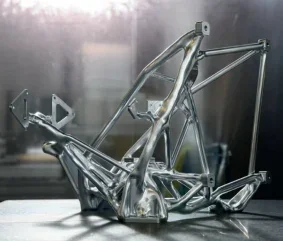
Big data is the new gold standard in laundry management and efficiency. And you need artificially intelligent machinery to achieve the best results.
Momentum
Homo sapiens, the hunter-gatherer, appeared approximately 100,000 years ago. It took the hunters 90,000 years to develop arable farming; it took arable farmers 10,000 years to develop industrialisation; the industrial societies took 200 years to develop nuclear power and the nuclear society; and fifty years to develop digitisation. It has taken the digitised societies 13 years to develop convolutional neural networks or deep learning – artificial Intelligence (AI) in the sense that we understand it today. This dizzying acceleration has been driven by human intelligence, a limitation that AI now frees us from. The next burst of acceleration will not diminish the differences between new and old technologies. On the contrary.
Differences
People are different and the differences have only become greater and clearer. It’s our blessing and burden. The differences give us an evolutionary advantage, because if just a few of the inventive ones can find solutions to vital problems, such as hunting mammoths or growing grain, others can learn from the imaginative ones. But the differences are also a burden, because if everyone has unlimited access to the use of the products of the creatives, for example, oil, plastic and atomic bombs, without understanding their consequences, it risks harming humanity and the planet. Technological development, like the art of medicine, should come with a caution: Primum non nocere. Do good and do no harm.
Intelligence
Intelligence can be defined as a system’s ability to integrate data, recognise patterns and use the result purposefully. Throw in ‘artificial’ and you have a definition of AI. It not only makes animals like the New Caledonian crow, orcas and elephants intelligent, but also computer programs like IBM’s Deep Blue. It requires intelligence, fr example, to recognise textile qualities and sort them into categories, but that does not make intelligent programs conscious. Consciousness requires more. Intelligence can create an overview of known information and put the information together in calculable ways, as for example AlphaGo did when it defeated Lee Sedol, the Korean world champion in Go, or as AlphaFold has done in its solution to the ‘protein-folding problem’.
From data to consciousness
By activating a single, tiny electronic switch, a computer creates data corresponding to 1 bit. By activating multiple switches in patterns, information is generated. By activating several patterns of information, knowledge is created for the person who reads the information, but it is not knowledge for the computer, just as the image on the TV screen has no meaning for the TV. It requires consciousness to be able to put information into context, for example that red frogs taste terrible, you get sick from eating them, you can die the next day, and it could have been me, so it is best to keep a respectful distance. Facial recognition triggers an experience in people, but none in the phone it opens.
Consciousness is a dynamic quantity that continuously develops its references, has emotions, intentions, willpower and the ability to stop itself. ChatGPT is not conscious, but pay sweet talking lip service, without own opinions. Gemini is amazing in its handling of completely unmanageable amounts of data and its ability to work out what the next meaningful word in a sentence should be, but it differs from consciousness in many ways, also by relying on intact hardware’s partitioning and software’s functioning. Consciousness, on the other hand, has an amazing resilience.
If a person loses a sense, for example, the sense of sight, the area of the brain that was involved in processing visual impressions can be repossessed and used for other purposes. If the two halves of the brain lose their connection, consciousness splits into two separate cognitive systems that function independently of each other to such an extent that one hand can try to inflict damage on a person or object while the other tries to protect. Consciousness and intelligence are very different entities.
Re-revolution
AI is a revolution in its own right, fascinating in its ability to support and replace human intelligence. We are facing another earthquake-like upheaval in the way people work, which corresponds to the effects of arable farming, industrialisation and digitisation. Completely new ways of working, organizing, and perhaps distributing that are as revolutionary as the Internet has been. And with the same business opportunities and threats. AI opens up new avenues, such as bionic design and biomorphic topologies, design fields inspired by structures, methods, and processes found in biological systems, using organic-parametric tools, see e.g. Hyperganic’s sunflower inspired design for a heat exchanger. Wouldn’t it be exiting to see a bionic designed washer extractor? Or nature’s process designs used on the washing process itself.

Think
Imagine if, at the beginning of the 1980s, you had been able to see what the internet would develop into and put your savings into a few of the big internetbased companies that we all know and take for granted today. Or if you could see today what your own company can develop into in 10 years, if you get it right, and what happens if you don’t. It is hard. The differences are big, just like the differences in producing horse-drawn carriages and cars. Both are vehicles, but don’t have much in common other than their mission statement. And the transition from horse-drawn carriages to cars is painful. It requires cannibalisation of one’s own business and establishing a new set of references; a radically different way of thinking and working.
So, the thousand dollar question here is: If you wash surgical clothes for hospitals in washer extractors today, some of them perhaps 30 years old, how should your laundry look to be competitive and still thriving in 10 years? What should the factories of the industry’s suppliers look like? How big is the risk that a capital chain brings the right AI skills from other industries, and establishes itself with completely new development technologies, design methods, manufacturing principles and factory setups? What would it look like?
Cases
We’ve already seen intriguing and exiting uses of AI in other industries, where the solutions do not just improve performance 10% to 20%, but make them up to 10 times better. QuantumBlack has helped Vistra Corp – a large power generator in the USA – on its way to delivering $250-$300 million in identified EBITDA. One seasoned Vistra Corp operations manager says: “There are things that took me 20 years to learn about these power plants. This model learned them in an afternoon.”
AI today is used in such diverse contexts as:
- Cancer treatment: Analysing medical images leading to earlier detection of tumors and anomalies, improving treatment options, and survival rates,
- Precision Agriculture: Optimizing irrigation, fertiliser use, and crop monitoring,
- Natural disaster prediction: Analysing weather patterns and seismic data to predict disaster risks and design emergency response strategies,
- Lifespan predicton: Danish researches trained a transformer model (as used in the LLMs) on 5+ mio. Danish people to predict early mortality, the chance that someone will move, and personality nuances related to extraversion, based on medical history, education, job, income, marriage status, and so on.






